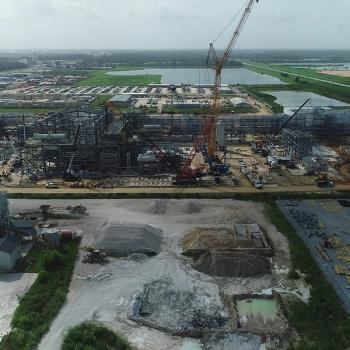
Mitsubishi Power’s Net Zero and Hydrogen Plans
The world’s aggregate demand for fossil fuels isn’t due to peak until 2027. The technical challenges embedded in a transition away from fossil fuels will require innovation, creativity, and collaboration across industries and geographies. The emergence of hydrogen infrastructure is an important element of the transition. Mitsubishi Power is investing heavily in alternative technologies for hydrogen and renewable energy sources.
“We get almost all of our energy right now from fossil fuels, and we’re remaking all of that while reinventing our power grid at the same time,” says Drummi Bhatt, Vice President of Market Intelligence & Strategy at Mitsubishi Power Americas.
The world’s
Since 1986, the site has hosted a large coal-burning power plant that provides energy to a network of municipal utilities and rural electric cooperatives. When the state of California changed its energy policy in 2006 to start drastically reducing its carbon emissions, demand for coal-fired power dropped precipitously. The Intermountain Power Agency (IPA), which owns the plant, faced a crossroads: Shut down the plant or reconfigure it to produce electricity from other fuels.
Mitsubishi Power will supply hydrogen-capable gas turbines that are expected to come online in 2025 when previous contracts expire. The turbines are currently capable of running on a mixture of 30% hydrogen and 70% natural gas. The company plans to run them on 100% hydrogen in time to meet the state’s net zero goals. These capabilities put the site on track to move from electricity production via coal to a zero-carbon power source, with intermediate steps that can reduce emissions and ensure resource adequacy.
As hydrogen-fueled power production ramps up, the hydrogen will have to come from somewhere, creating the need for another key technology. The Advanced Clean Energy Storage project sits on top of a geological salt dome in Delta, Utah, where Mitsubishi Power is partnering with Magnum Development to produce and store green hydrogen.
“One salt cavern filled with green hydrogen can store as many megawatt hours of energy as probably every grid-scale battery that exists in the world combined — 150,000 megawatt hours,” says Rob Webster, Chief Strategy Officer and Co-Founder of Magnum Development. “And it doesn’t degrade over time like a battery.”
As solar and wind generating capacity increases, the excess power produced during especially sunny or windy days can be used to power electrolyzers that convert water into green hydrogen. It can be stored for weeks, months or even seasons, until it’s needed as a fuel either to generate electricity or for other applications, such as industrial operations or transportation.
Mitsubishi Power has also partnered with Entergy, the fifth-largest utility in the United States, to create a viable hydrogen hub. Using Entergy’s 1,700 miles of hydrogen pipelines, the partnership will increase hydrogen’s footprint on the Gulf Coast in the same way that the partnership with Magnum will increase its footprint in the western United States. The company is also partnering with Bakken Energy in the Midwest on another clean energy hub. The partnership will produce hydrogen from natural gas using carbon capture, utilization and sequestration (CCUS) technology. The hub will provide access to clean fuel for immediate carbon reduction, while enabling further hydrogen infrastructure buildout.
Newsletter
Power your knowledge with the latest in turbine technology, engineering advances, and energy solutions—subscribe to Turbomachinery International today.




